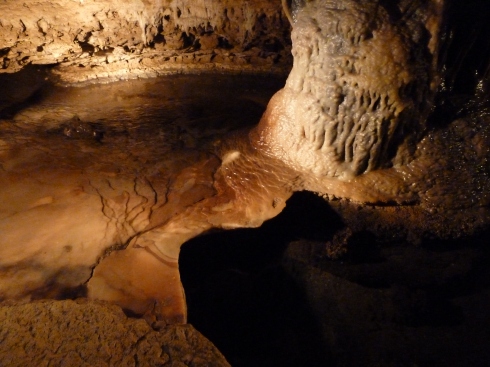You are currently browsing the tag archive for the ‘Wisconsin’ tag.
Madison has some rather lovely trees.
After the move from Madison back to my home state (Georgia), I realized how much I already missed Wisconsin. Its trees, lakes, green space, prairies, wetlands and wildlife have left a permanent mark on me. It’s strange how a place can create such an appreciation of life.
While up there, I took quite a few photos, but here are some of my favorites.
A day of strawberry picking.
Devil’s Lake in its fall peacefulness.
Enjoying an evening on Lake Mendota.
Walking toward town near Lake Monona — it’s completely frozen and covered in snow on the right.
How could I forget Picnic Point?
Georgia’s outdoor space is also breathtaking, but I have to drive a bit farther to get to it. After the move, we took a trip to the north Georgia mountains for some downtime.
Anna Ruby Falls in a mild Georgia winter.
For 2012: Here’s to a continued appreciation of the world, even amid transitions.
Photos copyright M. English, 2011-2012
Although whooping cranes are still endangered, the International Crane Foundation in Baraboo, Wis., has worked to help the species bounce back.
Below is a video I produced on the foundation. Enjoy!
Being relatively new to Wisconsin means I can still act like a tourist when I visit places for the first time. Case in point: The Cave of the Mounds in Blue Mounds, Wis.
Of course, I decided to take my handy camera. I initially thought shooting with little light would be difficult, but the cave had lighting that seemed to facilitate photo opportunities (for tourism purposes, I’m sure). Most of these shots were taken without flash. Some did turn out blurry, though, which serves as a reminder that I need to take more next time.
The rocks that form the cavern of the cave date back to 400 million years ago. Scientists say the cave itself may have formed roughly 1 million years ago.
Good ole’ Ebenezer Brigham, Wisconsin’s first white settler, discovered the cave while removing limestone from the area in the late 1930s.
Did I mention that part of the cave trails beneath the local highway? What a strange feeling to imagine cars flying by overhead when you’re down there.
Rock structures called stalactites and stalagmites formed by dripping water that entered through a crack in the ceiling. Over time, the droplets deposit minerals where they drip from and where the droplets land, creating these rock structures.
Then I headed over to Mt. Horeb, Wis., to revisit some troll buddies I saw this summer with a friend. The town’s reputation as the troll capital of the world comes from settlers’ Scandinavian roots and one store’s tradition of placing trolls outside to attract visitors. Soon after, other businesses began putting trolls outside to draw attention to their places, especially after a competing highway threatened to remove steady traffic into the town.
There’s nothing like enjoying a sunset with a troll statue and fried cheese curds.
Photos copyright Marianne English, 2011.
A break from writing, at last.
In late September, I joined a large group of Madisonians to learn about history on a rainy Sunday. We met while attending an archaeology tour of Madison’s Picnic Point, a historical peninsula that juts into Lake Mendota. I took loads of photos, audio and ambient sounds. The point was really beautiful that day, especially with droplets of rain clinging to the fall foliage. I enjoyed the tour, which was led by the Wisconsin Historical Society’s Amy Rosebrough. I also had a nice time getting to know people in the group.
Today, Madison.com published the project for a wider audience to see. Below are a few shots that didn’t make it into the show.
This lonesome feather was begging to be photographed.
This amphibian hopped across the path between bouts of intense sun and rain that day.
Plans are finally under way to create a more park-like area at the tip of the peninsula. Other plans to create an amphitheater-style atmosphere near Picnic Point’s first fire pit drew controversy early on. I’m not sure where that plan stands. I’m also uncertain how people feel about the new park area currently under construction.
People care about Picnic Point because of its deep history. Wisconsin’s native people groups stayed there and even used the land to create sacred burial mounds (some remain roped off today). Settlers in the 1860s used the space as a “modest recreation area,” where boaters and campers relished in good company. The peninsula served as a farmstead and private land as well, at least until the university purchased it in 1939.
Personally, I think Edward Young, a previous owner of the land, says it best: “God made the land there for people to enjoy.”
(Photos copyright Marianne English, 2011)






















